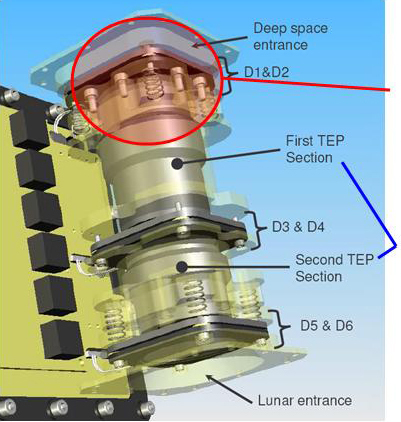Science Overview
A top priority of the NASA Lunar Reconnaissance Orbiter (LRO) mission is the “characterization of the global lunar radiation environment and its biological impacts and potential mitigation, as well as investigation of shielding capabilities and validation of other deep-space radiation mitigation strategies involving materials”.
The CRaTER investigation addresses the effects of ionizing energy loss in materials due to solar energetic particle events and galactic cosmic rays, specifically in silicon and in an analogue to human tissue.
 |
pairs of thick and thin silicon detectors |
|---|---|
| |
| Theory of Operation |
Our investigation focuses on understanding the linear energy transfer (LET) spectrum inside materials through direct measurement in the space radiation environment, particularly ions with energies above 10 MeV/nucleon, combined with models of radiation transport through materials.
The CRaTER results will have direct application to the biological effects of the lunar radiation environment as well as the environmental effects on electronic systems. The details of the LET spectra will have direct use in evaluating Single Event Effect vulnerabilities.

